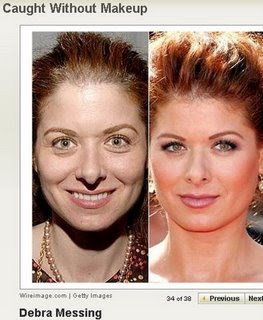Becoming a parent by blending families or marrying someone with kids can be a rewarding and fulfilling experience. If you've never had kids, you'll get the opportunity to share your life with a younger person and help to shape his or her character. If you have kids, you'll offer them more opportunities to build relationships and establish a special bond that only siblings can have.
In some cases, your new family members may get along without a hitch (remember The Brady Bunch?), but other times you can expect difficulties along the way. Figuring out your role as a parent — aside from the day-to-day responsibilities that come with it — also may lead to confusion or even conflict between you and your partner, your partner's ex-wife or ex-husband, and their kids.
While there is no foolproof formula for creating the"perfect" family (every family has its own dynamics), it's important to approach this new situation with patience and understanding for the feelings of those involved. Suggestions below also may help to make things easier as you adapt to your new role.
Start Slow
The initial role of a stepparent is that of another caring adult in a child's life, similar to a loving family member or mentor. You may desire a closer bond right away, and might wonder what you're doing wrong if your new stepchild doesn't warm up to you or your kids as quickly as you'd like — but relationships need time to grow.
Start out slow and try not to rush into things. Let things develop naturally — kids can tell when adults are being fake or insincere. Over time, you can develop a deeper, more meaningful relationship with your stepchildren, which doesn't necessarily have to resemble the one they share with their birth parents.
Factors That Affect Your Relationship
Children who are mourning the loss of a deceased parent or the separation or divorce of their birth parents may need time to heal before they can fully accept you as a new parent.
For those whose birth parents are still alive, remarriage may mean the end of hope that their parents will reunite. Even if it has been several years since the separation, kids (even grown ones!) often hang onto that hope for a long time. From a child's perspective, this reality can make them feel angry, hurt, and confused.
Other factors that may affect the transition into stepparenting:
- How old the kids are. When it comes to adjusting and forming new relationships, younger kids generally have an easier time than older kids.
- How long you've known them. Usually, the longer you know the kids, the better the relationship. There are exceptions (for example, if you were friends with the parents before they separated and are blamed for the break-up), but in most cases having a history together makes the transition a little smoother.
- How long you dated the parent before marriage. Again, there are exceptions but typically if you don't rush into the relationship with the adult, kids have a good sense that you are in this for the long haul.
- How well the parent you marry gets along with the ex-spouse. This is a critical factor. Minimal conflict and open communication between ex-partners can make a big difference on how easily kids accept you as their stepparent. It's much easier for kids to transition to new living arrangements when adults keep negative comments out of earshot.
- How much time the kids spend with you. Trying to bond with kids every other weekend — when they want quality time with a birth parent they don't see as often as they'd like — can be a difficult way to make friends with your new stepchildren. Remember to put their needs first: If kids want time with their birth parent, they should get it. So sometimes making yourself scarce can help smooth the path to a better relationship in the long run.
Knowing ahead of time what situations may become problematic as you bring new family members together can help you prepare so that, if complications arise, you can handle them with an extra dose of patience and grace.
Steps to Great Stepparenting
All parents face difficulties now and then. But when you're a stepparent, those obstacles are compounded by the fact that you are not the birth parent — this can open up power struggles within the family, whether it's from the kids, your partner's ex-spouse, or even your partner.
When times get tough, however, putting kids' needs first can help you make good decisions. Here's how:
- Put needs, not wants, first. Kids need love, affection and consistent rules above all else. Giving them toys or treats, especially if they're not earned with good grades or behavior, can lead to a situation where you feel like you're trading gifts for love. Similarly, if you feel guilty for treating your biological kids differently from your stepchildren, don't buy gifts to make up for it. Do you best to figure out how to treat them more equally.
- House rules matter. Keep your house rules as consistent as possible for all kids, whether they're your kids from a previous relationship, your partner's kids from a previous relationship, or new children you have had together. Children and teens will have different rules, but they should be consistently applied at all times. This helps kids adjust to transitions, like moving to a new house or welcoming a new baby, and helps them feel that all kids in your home are treated equally. If kids are dealing with two very different sets of rules in each home, it may be time for an adults-only family meeting — otherwise kids can learn to "work the system" for short-term gain but long-term problems.
- Create new family traditions. Find special activities to do with your stepkids, but be sure to get their feedback. Some new family traditions could include board game nights, bike riding together, cooking, doing crafts, or even playing quick word games in the car. The key is to have fun together, not to try to win their love — kids are smart and will quickly figure out if you're trying to force a relationship.
- Respect all parents. When a partner's ex is deceased, it's important to be sensitive to and honor that person. If you and your partner share custody with the birth parent, try to be courteous and compassionate in your interactions with each other (no matter how hard that can be!). Never say negative things about the birth parent in front of the kids. Doing so often backfires and kids get angry with the parent making the remarks. No child likes to hear their parents criticized, even if he or she is complaining about them to you.
- Don't use kids as messengers or go-betweens. Try not to question kids about what's happening in the other household — they'll resent it when they feel that they're being asked to "spy" on another parent. Wherever possible, communicate directly with the other parent about relevant matters, such as scheduling, visitation, health issues, or school problems. Online custody calendars make this process a little easier because parents can note visitation days and share this information with each other via the Internet.
- Talk to your partner or spouse. Communication between you and your partner is important so that you can make parenting decisions together. This is especially crucial if you each have different notions on parenting and discipline. If you're new to parenting as a stepparent, ask your partner what would be the best way to get to know the kids. Use resources to find out what kids of different ages are interested in — and don't forget to ask them.
No matter what the circumstances of your new family, chances are there'll be some bumps along the way. But don't give up trying to make things work — even if things started off a little rocky, they still can (and probably will) improve as you and your new family members get to know each other better.
Reviewed by: Michelle New, PhD
Date reviewed: December 2008
Source : kidshealth.org





.jpg)
.jpg)
.jpg)
.jpg)
.jpg)
.jpg)
.jpg)
.jpg)
.jpg)
.jpg)

































